I’ve already mentioned that my time in Canada involved a short trip to Dinosaur Provincial Park with Darren Tanke, but we were also out with Mark Graham, a preparator at the Natural History Museum in London. Mark has kindly written up a guest post on the trip and the hunt for the lost Spinops quarry.

Mark preparing Spinops
The recent Fossil Preparation and Collections Symposium (FPCS) hosted by the Royal Tyrrell Museum in Drumheller, provided a great opportunity for me to give a talk about the recent conservation and mounting of a large skull of the ichthyosaur Temnodontosaurus platyodon and also to team up with Darren Tanke for some fieldwork in Dinosaur Provincial Park to try and find the location of a lost quarry.
The quarry we sought had contained, in 1916, a bonebed of material which the legendary Sternbergs had collected for the then Geological Museum in London (now the NHM). Among the specimens collected was the partial skull and parietal elements of a horned dinosaur – a centrosaurine ceratopsian – which I had the privilege of preparing in 2008. It was a new species named Spinops sternbergorum and it was through this work that I got to know Darren (we were co-authors on the descriptive paper). He suggested that I take along a sample of the Spinops matrix so that we could use it to try and match the distinctive ironstone to exposures in an area “3 miles upriver from Steveville”, which the Sternbergs had recorded as the location of the find in their field notes. Locating abandoned quarries in the badlands from clues left in old photographs, fieldnotes, quarry markers and litter is something of a speciality of Darren’s and so I tagged on three days holiday at the end of the symposium to do some sleuthing with him.

Spinops quarry material, replete with ironstone
Dave Hone was also at the Tyrrell, undertaking research with Darren into bite marks on fossil bones and he also attended the symposium and gave a very insightful presentation titled ‘Scientific Communication of Fossil Preparation in the Digital Realm’ [Dave adds: this should go online at some point]. This discussed how his blog had been used to communicate Darren’s prepwork on the tyrannosaurine Gorgosaurus to a wide audience of professionals and amateurs. Following the symposium, Dave joined in the expedition in search of the Spinops quarry.
First, we hired a small room in a ‘Hotel and BBQ Pit’ in a little place called Patricia, a few miles outside Dinosaur Provincial Park. It is an old haunt of Canadian palaeontologists and the accommodation could best be described as offering ‘substantial scope for improvement’. I experienced for the first time in many many years the joys of an upper bunk bed! But it all added to the fun and, as the name suggested, in the evening guests get to cook their own steaks, burgers and chicken on a big indoor barbeque.
We were all up early the following morning and after a hot breakfast we set off for the field with pack lunches and plenty of water as the weather, which had been cold with snow flurries, had turned quite warm and windy. Darren had arranged access with a land owner and we drove across the prairie in search of a padlocked fence that we had been given the combination to. The terrain was incredibly flat and featureless but thanks to Darren’s knowledge and a bit of help from the GPS, we found our way. En-route we saw some great wildfowl and white tailed deer which gave Dave an opportunity to get busy with his telephoto lens.

Hoodoo
Soon enough we reached a point where the prairie fell suddenly away into coulees and down into the Red Deer River Valley with the great bluffs of the Upper Cretaceous rising all around. This landscape was formed after glaciers scraped away great swathes of land during the last ice age 13,000 years ago and has been steadily eroding ever since, creating some wonderful capped pinnacles called hoodoos, where ironstone rich layers weather out atop columns of softer sandstone rocks, like giant mushrooms. The scene looked exactly like the old photos from the golden age of fossil hunting and we began working our way down the steep sides of the bluffs, stopping on platforms as we descended and jumping across the occasional water eroded crevice onto the next slope. Many of the surfaces were very slippery with weathered Bentonite clay shale, which mercifully was fairly dry. When wet the shale is treacherous and impossible to get a firm footing on.

Mark in the field. The area was cleared of cactus first.
Darren had warned us against nasty little cactuses which grew a few centimetres high and that left lots of needles in the hand if touched. It didn’t take me long to reach up for support climbing over a ledge and put my hand onto one, which resulted in some choice language. My right hand resembled a pin cushion and it took a while to remove the spines. Some of the broken ones stayed put and are still working their way out weeks later.
But we soon all started finding material – dinosaur, champsosaur and turtle was everywhere we looked, weathering out of the rocks all around us. Hadrosaur and ceratopsian bones are commonplace and during our prospecting our finds included a row of articulated hadrosaur vertebrae, complete limb elements, a virtually intact ceratopsian vertebrae hanging off the edge of a slope, a perfect ankylosaur tooth and two large tyrannosaur teeth. We also found part of a hadrosaur limb with fantastic serration scars from predation. One area which demanded our attention was a steep slope at the bottom of which we were finding fragments of tyrannosaur bone and all three of us turned up several broken fragments across an area of a few feet, suggesting that a specimen was – or had been – weathering out.

Dave and Darren take out a tyrannosaur tooth
Under the provisions of the Alberta Historical Resources Act of 1978 all palaeotological, prehistoric and historic resources are protected on both crown and private lands. The DPP is a world heritage site and the law protecting its fossils is unambiguous – nothing may be removed. Darren used a GPS to pinpoint our more significant finds and, because he represents the Royal Tyrrell, we were able to carefully remove, tag and bag the tyrannosaur teeth (which could be used in the museum’s excellent educational programme) and the predated specimen, which had an immediate research application. This material and the accompanying data were logged back at the museum. It was very satisfying for Dave and I to record our names on the specimen find tags alongside Darren, knowing that these would be associated with the specimens in the museum collections.
While no professional palaeontologist would argue against the need to protect fossils and guard against illegal collecting, it seemed very alien to leave behind really well preserved specimens to deteriorate in – and ultimately be lost to – the elements. I couldn’t help thinking that, surely fossils like the perfect little ankylosaur tooth, the intact limb bones and phalanxes and unguals and the string of vertebrae could be loaned to schools and colleges in the province and beyond to inspire students to study palaeontology; serving an important purpose and protecting the material for future generations?. While the scientific value of much of the isolated elements is limited, it could nevertheless spark passion in budding palaeontologists and who can argue that that is not in itself of scientific value?
We scoured a long stretch of the coulees – up and down each one – parallel to the river in the vicinity Darren had identified from the Sternberg field notes, paying particular attention to the boundary of the Dinosaur Park and Oldman formations. Dave found some rock closely matching the matrix sample but there was no sign of quarrying at that spot. On the second day, Darren found a metal quarry marker which he recorded on the GPS for further investigation, but he didn’t think it related to the missing quarry and he is now turning his attention (following some further intriguing clues)to the possibility that it might be located on the opposite side of the riverbank.

Spinops parietal frill: sadly still quarry-less.
My visit to the Royal Tyrrell collections, the symposium and the field trip were fantastic and I’d like to record my thanks to the organisers who did a fabulous job. In particular I know that Dave will join me in marking our appreciation to Darren, who spent a great deal of time with us even though he had other pressing demands, including his father’s hospitalization and a house purchase to deal with while we were with him.
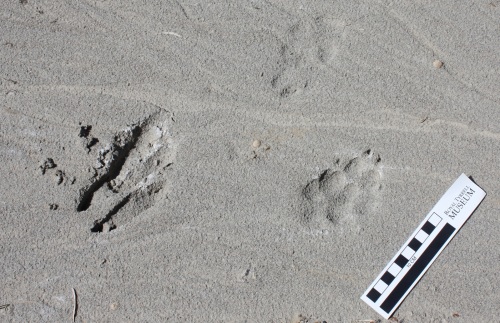

 And finally a chipmunk, one of many hanging around in the woods near Don Henderson’s house, though I was also surprised to see them out in boulder fields too. I saw traces of activity from beavers and porcupines on several trees (and a couple of roadkill of the latter) but sadly no live ones were around. I think pretty much all of these bar the chipmunk were new to me, not just in the wild, but in zoos too. Perhaps as they are considered too ‘boring’ or ‘normal’ for most collections, and if the US doesn’t bother, then they’re not too likely to end up in Europe or Asia either, so this was really a pretty good haul by my standards.
And finally a chipmunk, one of many hanging around in the woods near Don Henderson’s house, though I was also surprised to see them out in boulder fields too. I saw traces of activity from beavers and porcupines on several trees (and a couple of roadkill of the latter) but sadly no live ones were around. I think pretty much all of these bar the chipmunk were new to me, not just in the wild, but in zoos too. Perhaps as they are considered too ‘boring’ or ‘normal’ for most collections, and if the US doesn’t bother, then they’re not too likely to end up in Europe or Asia either, so this was really a pretty good haul by my standards.






















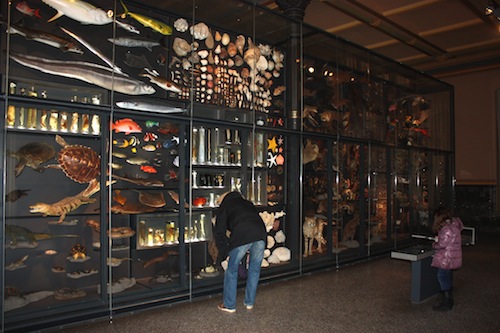


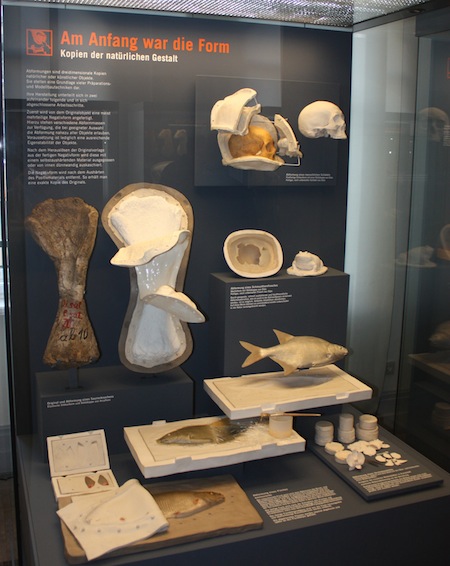


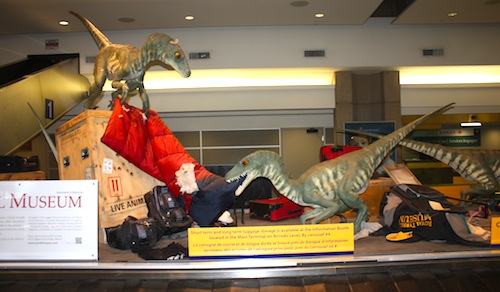
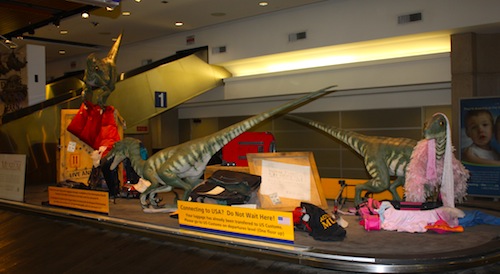

Recent Comments